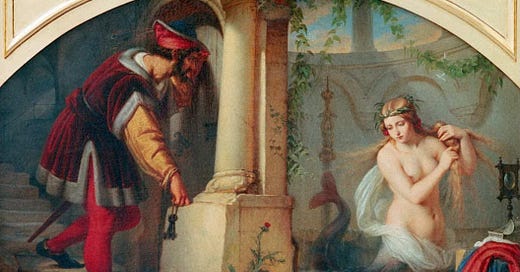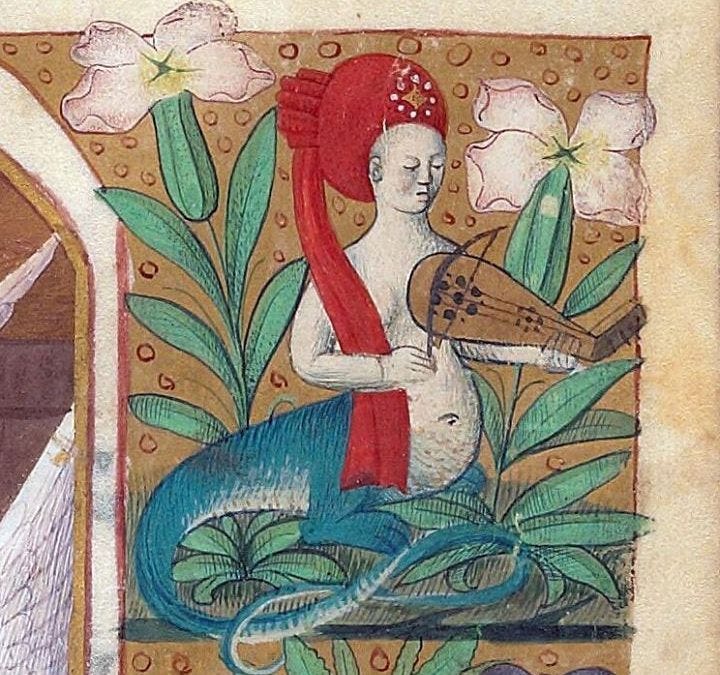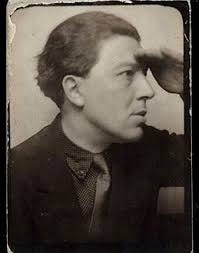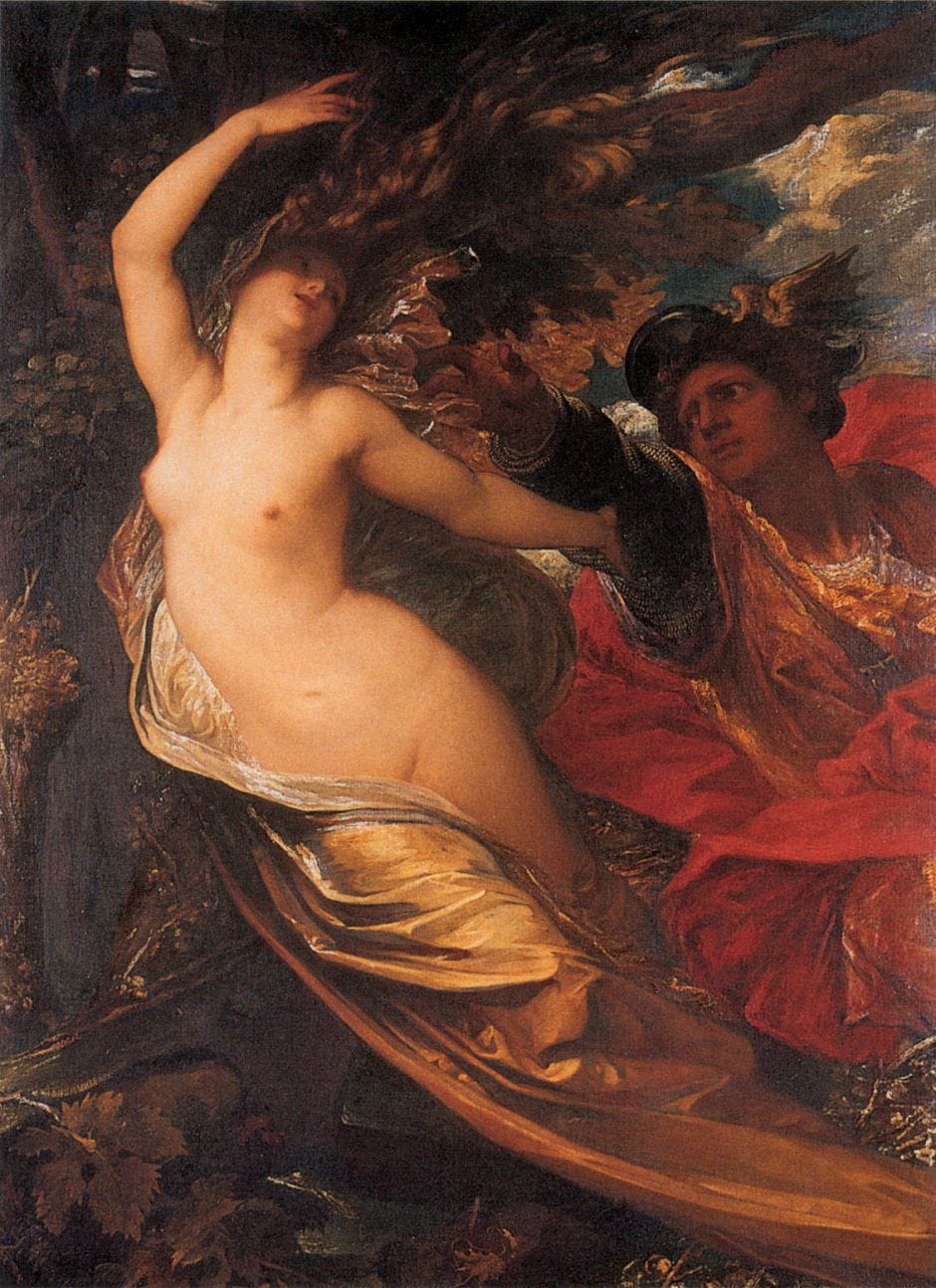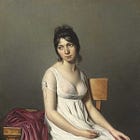Dear coven,
For this week’s enchantment, a weekly series in which I talk about works of art motivated by magic, I would like to discuss the importance of fairy-women, like Mélusine, to the surrealist movement.
In the 1930s, a considerable number of women joined the surrealist movement. In reaction to this uptick and in opposition to the devastations caused by the war, Surrealism’s founder, André Breton proclaimed:
The time has come to value the ideas of woman at the expense of those of man, whose bankruptcy is coming to pass fairly tumultuously today. It is artists, in particular, who must take the responsibility, … to maximize the importance of everything that stands out in the feminine world view in contrast to the masculine. 1
While this expresses an adoration towards women, we must note that in his comments on femininity, Breton inferred that women are capable of experiencing the world differently due to their magical worldview, hence the woman’s ‘irrationality’ became an aspiration for the male surrealist mind. One of the female characters in Breton’s novel, Arcanum 17, for example, symbolises the role of the woman in the man’s creative process – she resurrects him as a poet and grants him intellectual salvation.
Breton was captivated by the vision of the ‘lost woman’, the one who sings in a man’s imagination. He conjured up an entity that was much greater than a Muse, she symbolised the imagination itself and all of its libidinous potential. When pondering upon his female contemporaries, Breton conjured up a vision akin to the fourteenth-century fairy figure of Mélusine.
The first appearance of the legend of Mélusine has been attributed to Jean d’Arras at the turn of the 14th century, with a second version authored by Coudrette in the early 15th century. Though it has been supposed that the compelling character of Mélusine could be traced back to Gallo-Roman and Celtic prototypes, it is safer to assume Breton would have had access to the French version of the text. While Mélusine’s earliest appearance was in medieval myth, it was then re-visited in Romantic literature.
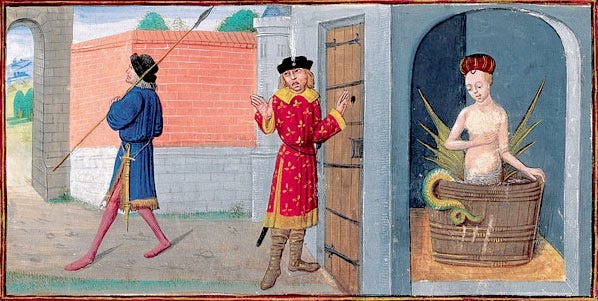
The Romantic view of the occult certainly contributed to the conceptualisation of the woman as a sorceress and fairy. One can spot references to Mélusine amongst the pages of numerous Romantic literary works like those of Zola. When Breton conducted his research into the occult he was prompted to do so due to the rich esoteric references in the works of the Romantic poets. It has been supposed that Breton was alerted to the works of occultists such as Eliphas Lévi by Rimbaud. In turn, he would have discovered Lévi calling upon Mélusine in his History of Magic (1859) as he framed her as a magical female creature that signifies ‘the flux of things and the analogical alliance of opposites in the manifestations of all occult forces of nature.’ 2 This layered vision is what Breton invokes in his Arcanum 17, in which the image of the woman is an exploited victim of man’s rigid rationality. 3
The most well-known version of story tells the tale of Mélusine, the daughter of the King of Scotland, who buried her father in a mountain during her youth. This angered her fairy mother and so she cursed her daughter – Mélusine was doomed to transform into a serpent from the waist down every Saturday. Archetypically for these tales, a noble gentleman discovers her when hunting in the woods and falls in love with her.
Mélusine agrees to marry the nobleman, Lord of Forez of Poitou, on the condition that she will be allowed seclusion on Saturdays. While the half-human, half-siren’s years in the region of Poitou were beneficial – forests were cleared, crops were bettered, and cities and castles were built – the Lord became suspicious of her reclusive Saturdays. Curiosity overcame him and he resorted to spying on Mélusine through a keyhole. 4 As he witnessed her metamorphosis, the vision of his beautiful wife diminished to that of a deviant serpent who has tricked him.
Mélusine transformed into a winged dragon and took flight – a common happenstance in folklore in which the husband’s transgression leads to his fairy wife vanishing. Mélusine, at least for a time, maintained a certain proximity to the demonic. 5
This classification was not shared by the surrealists who, like Lévi, rejected her stigmatisation as a damned, demonic woman, instead she symbolised the intervention of Surrealism in everyday life.
In Breton’s text she is redeemed and innocent, a beautiful femme-enfant. His vision of her has the potential to rescue humanity:
Melusina…She’s the one I invoke, she’s the only one I can see who could redeem this savage epoch. 6
Mélusine is not the only woman of legend for whom Breton held a fascination, for example, in 1941 he composed the poem Fata Morgana, in which he laments:
From the brunette to the blonde
Between stubble and a layer of compost
There’s room for a thousand and one glass bells
Under which the heads that enchant me ceaselessly return to life
In the suspension of the holy
Heads of women one after another perch on your shoulders when you sleep. 7
The idea of men being lured away by fairies and water spirits was especially seductive to Breton.
In Romantic poetry, the male poets took control over nature, and yet they feminised its very concept, while stressing the importance of (man) in the natural world. 8 Many of the Romantic poets relied on nature as they would on woman – as a nurturer of thought, rather than an entity with an independent thought-process. The surrealists did not place such emphasis on nature as they did on unleashing the power of the subconscious. Their primary goal was realising the potential of the irrational, and this they found in women.
While Breton’s writing underscores the importance of womanhood to mankind, in his visions, womanhood was still in service to man. This is stressed by a number of women who participated in the movement, as exemplified by Leonora Carrington:
The women surrealists were considered second to the male surrealists. The women were considered people there to inspire, aside from doing the washing, cooking, cleaning, and feeding. 9
While women were lauded as saviours, they were praised for their irrationality, their fairy-like nature, and their elusiveness. They graduated from the role of Muse to the label of sorceresses. Surrealism was one of the first movements in Modernism that stressed the importance of woman, but as we recognise its inclusivity, we must not forget the limits it imposed. Female artists who joined the movements were admitted as artists, yes, but often, they were women first and artists second.
A rebellion against the traditional roles of femininity can be noted in the works of Leonora Carrington, Dorothea Tanning, Leonor Fini and Remedios Varo. These roles were imposed not just by a patriarchal society, but by the surrealist movement itself.
I hope you have enjoyed this consideration of the legend of Mélusine in Surrealism. If you are interested in learning more about painting and literature through the prism of magic and folklore, please consider subscribing to this newsletter and following its visual companion on Instagram.
Thank you for reading!
Tip Jar ☕
Recent articles:
bibliography
Acker, Ally. The Flowering of the Crone: Leonora Carrington, Another Reality. Documentary. Reel Women Media, 2015.
Breton, André. Arcanum 17. Los Angeles: Green Integer, 1944.
Breton, André. ‘Fata Morgana’. Translated by David Lenson and A.F Moritz. The Massachusetts Review 51, no. 3 (2010): 531–39.
Breton, André. Communicating Vessels. Translated by Geoffrey T. Harris. Lincoln: University of Nebraska Press, 1990.
Clouston, Victoria. André Breton in Exile: The Poetics of ‘Occultation’, 1941-1947. New York: Routledge, 2018.
Lévi, Eliphas. The History of Magic: Including a Clear and Precise Exposition of Its Procedure, Its Rites and Its Mysteries. Translated by Arthur Edward Waite. London: William Rider & Son Limited, 1922.
Mahon, Alyce. ‘Of Kings and Queens: Alchemical Desire and the Imagination’. In Surrealism and Magic: Enchanted Modernity, edited by Gražina Subelytė and Daniel Zamani, 59–70. Munich: Prestel, 2022.
Mellor, Anne. Romanticism and Gender. New York: Routledge, 1993.
Wade, James. Fairies in Medieval Romance (The New Middle Ages). Basingstoke: Palgrave Macmillan, 2015.
André Breton, Arcanum 17, trans. Zack Rogow (Los Angeles: Green Integer, 2004), 80.
Alyce Mahon, ‘Of Kings and Queens: Alchemical Desire and the Imagination’, in Surrealism and Magic: Enchanted Modernity, ed. Gražina Subelytė and Daniel Zamani (Munich: Prestel, 2022): 60.
Victoria Clouston, André Breton in Exile: The Poetics of ‘Occultation’, 1941-1947 (New York: Routledge, 2018), 144.
Eliphas Lévi, The History of Magic: Including a Clear and Precise Exposition of Its Procedure, Its Rites and Its Mysteries, trans. Arthur Edward Waite (London: William Rider & Son Limited, 1922), 233-234
James Wade, Fairies in Medieval Romance, (Basingstoke: Palgrave Macmillan, 2015), 185
André Breton, Communicating Vessels, trans. Geoffrey T. Harris (Lincoln: University of Nebraska Press, 1990), 27
André Breton, ‘Fata Morgana’, trans. David Lenson and A.F Moritz, The Massachusetts Review 51, no. 3 (2010), 536.
Anne Mellor, Romanticism and Feminism, (New York: Routledge, 1993), 6-8.
Acker, The Flowering of the Crone, 1987.

